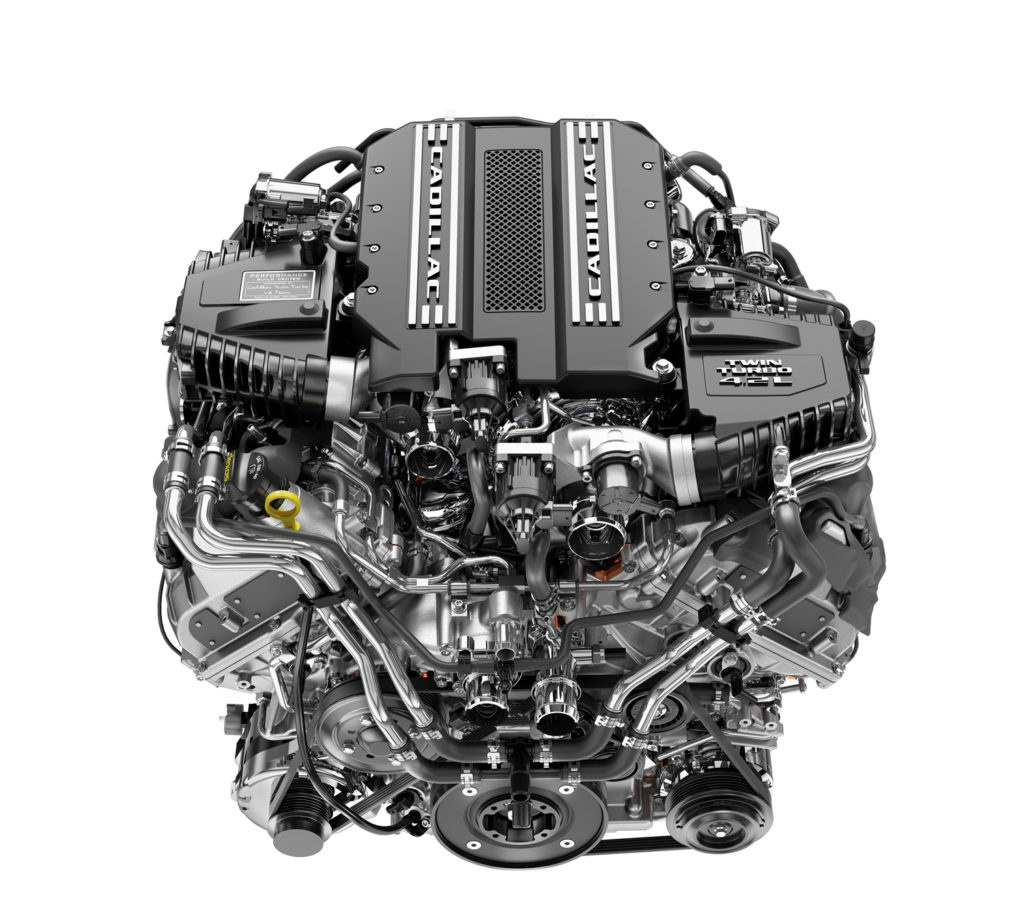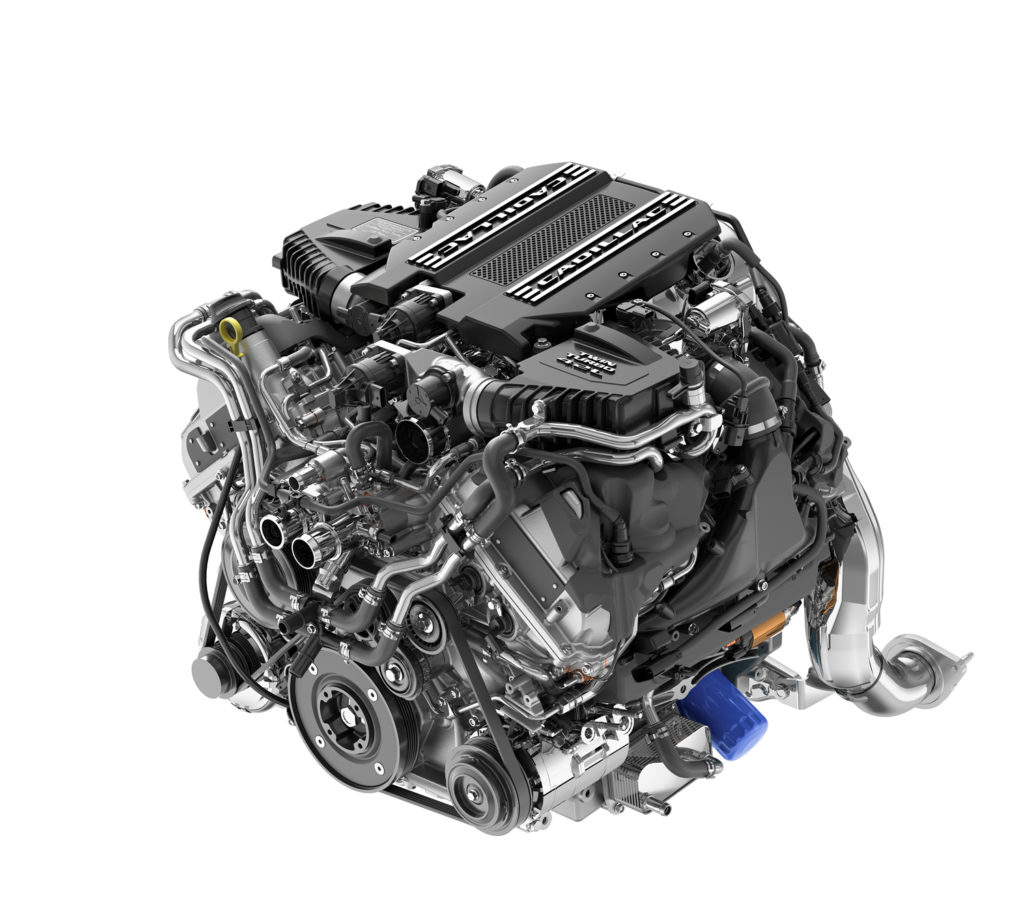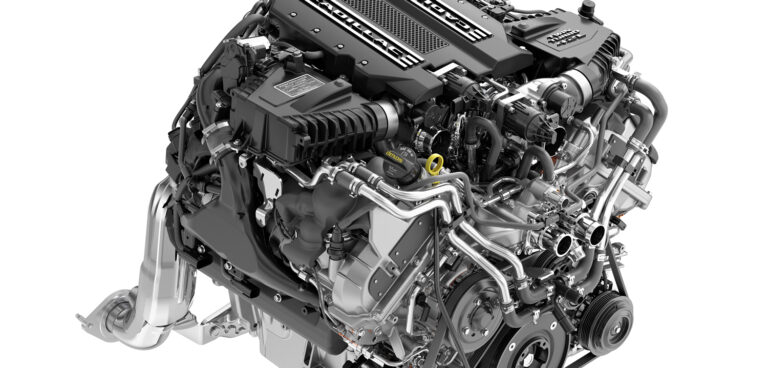Cadillac has begun a new chapter in its high-performance legacy with the introduction of the brand’s first-ever twin-turbo V-8 engine. The new unit will form the centerpiece of the new CT6 V-Sport sports sedan.
Developed as a small-displacement V8 in the classic vein, the new 4.2-liter engine has an estimated at 560ps and 627 lb-ft of torque. The company will also offer an optional 500ps version. The innovative motor is a clean-sheet design that introduces unique design elements developed to balance performance and efficiency with compact, mass-efficient packaging.
“Designing an all-new engine was the best way to achieve the performance goals for the CT6 V-Sport,” said Jordan Lee, chief engineer on the project. “It builds on Cadillac’s well-established turbocharging know-how and forges new ground with innovative features that deliver exceptional performance and refinement.”
At the center of the 4.2L unit is a ‘hot vee’ configuration that transposes the conventional layout of the cylinder heads’ intake and exhaust systems to mount the turbochargers at the top of the engine, in the valley between the heads, therefore virtually eliminating turbo lag and reducing the engine’s overall packaging size.
In a conventional turbocharged engine, the cylinder heads receive the pressurized air charge through ports at the top of the engine and the exhaust exits through ports on the lower outside of the heads into manifolds connected to the turbochargers.

With Cadillac’s design, the intake-charged air enters through the lower outside of the heads and exits through the top inside — where the turbochargers are integrated with the exhaust manifolds — for quick spool-up that translates into more immediate power delivery. The design also allows closer mounting of the catalytic converters, for efficient packaging.
The foundation of the development is an all-new, durable and lightweight aluminum cylinder block that houses an equally robust, lightweight rotating assembly composed of a forged steel crankshaft, forged steel connecting rods and high-strength aluminum pistons.
The crankshaft’s 90.2mm stroke complements the cylinder bores’ 86mm diameter to give the engine its 4.2-liter displacement.
Its comparatively small-bore dimension enables the reduction in the size and weight of the pistons, optimizing the engine’s geometry to match the fast-rev capability permitted by the engine’s low-inertia, twin-scroll turbochargers. The result is exceptional responsiveness and immediacy of power across the rpm band.
The turbochargers produce up to 1.38 bar and are matched with electronic wastegate control for more precise boost management and more responsive torque production. In fact, 90% of the engine’s peak torque is available at only 2000rpm, and it is carried through 5200rpm for a confident, virtually bottomless power reserve.



